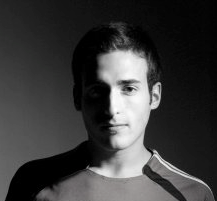
Every once and a while you ask yourself the questions: should I? Or shouldn’t I?
In this story it begins with a keyword search on twitter. A twenty-four year old Media Studies & Public Relations Graduate was fiddling around on Twitter when he searched the term “media” only to come across @BrianSolis.
For those of you who don’t know, Brian is a self-made social media guru in Silicon Valley. I did a little research and found that he has written quite a few books about Public Relations and more recently a book about how to use social media in PR and marketing.
I began the search for his book and found that Canadian stores weren’t carrying it. So, I did the first thing that came to my head – I asked him for a copy. Yes, you read that correctly I decided to ask him for a copy. I figured what’s the worst thing that could happen – he says no or he ignores me all together? There is always the off chance that he might actually say yes.
So, I did it. I sent him a message in less than 140 characters, “student – searching for your book. Can’t seem to find a copy. Any chance you have one laying around?” I hit send and waited. Within 30 minutes I received a message asking for my mailing address saying he would send me a copy – was this legit?
As I read the book I began to understand more and more as to why he would be the type of person to send me a copy.
At the heart of Brian Solis’s newest book
Engage! is the statement “Engage or Die” where we, as social media professionals, embark into an online world where genuine participation is a form of new marketing, which he titles "un-marketing".
We are addressed as the “Champions” leading the socialization of our company’s marketing and service who must also ensure that our actions are observable. Social media is the new form of communication to the masses and before we can begin to properly disseminate information we must first learn how to “speak”.
Messages are not conversations. The era of “top-down” (meaning from the top of the company to the masses) message creation is nearing it’s end and it’s time to begin meaningful conversations from the bottom up. Social media is a means, not an end. It’s about being human.
Engaging is: showing interest in what people have to say and responding accordingly.
Engaging is: developing relationships with those who care enough to mention you or your company in the first place.
Engaging is: giving people something to believe in.
 Engage!
Engage! has instilled within me the confidence to develop my own social media plans. It has presented me with the resources to be a social media champion.
Be warned! There is a lot of research involved. Like anything worthwhile you need to be dedicated to your cause and understand that a large amount of time will be spent researching keywords, blogs, opportunities, threats, etc. But, with the right attitude Brian Solis has convinced me that success is possible.
Our goal is to take socialization, a human element, and create the same socialization in the online world - Solis writes, “technology is facilitating the social effect and it is most certainly connecting us in ways that truly make the world a much smaller place, one where we can participate in its definition and evolutions – and also define our place within it.”
Engage! is a must read for any social media enthusiast.
 I do a lot of thinking when I am driving around in my car. These days I cruise by a number of different gyms and I find myself thinking, “when I grow older I want to do more weights.” I want to get bigger, with more muscle, and one day (hopefully) I’ll attain that mean looking body I always wanted.
I do a lot of thinking when I am driving around in my car. These days I cruise by a number of different gyms and I find myself thinking, “when I grow older I want to do more weights.” I want to get bigger, with more muscle, and one day (hopefully) I’ll attain that mean looking body I always wanted. I realize I’ll never be that muscle man if I don’t go to the gym, I’ll never start eating better if I don’t take the time to learn how to cook the right meals, I’ll never see more places if I don’t make a commitment to travel, and I’ll never see more friends/family if I don’t put myself out there to visit.
I realize I’ll never be that muscle man if I don’t go to the gym, I’ll never start eating better if I don’t take the time to learn how to cook the right meals, I’ll never see more places if I don’t make a commitment to travel, and I’ll never see more friends/family if I don’t put myself out there to visit.










